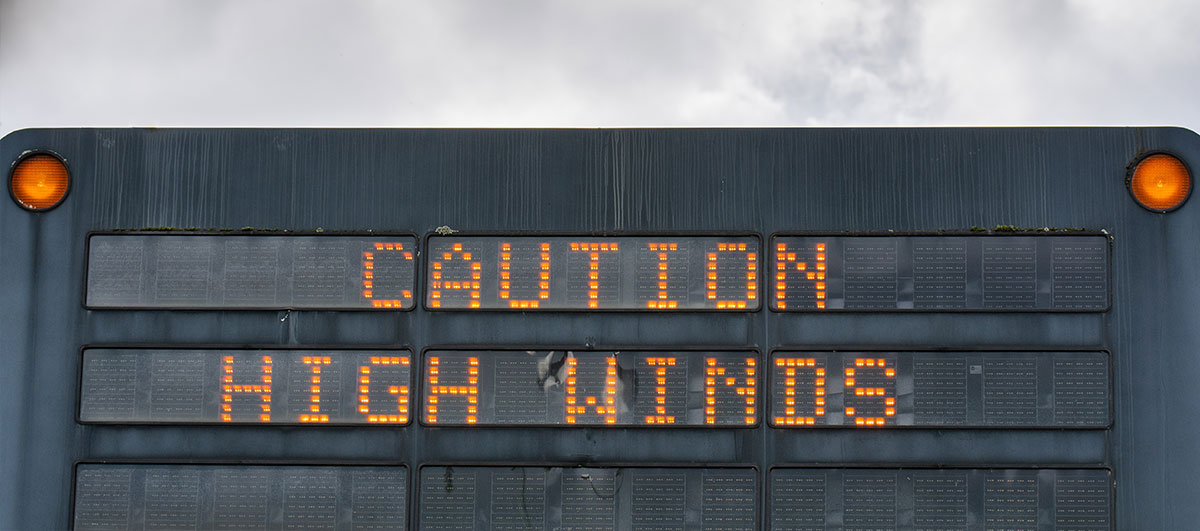High Winds and Your Roof: What Happens During Storms and Hurricanes

A bad storm with high winds can happen anywhere in North America. It takes just one event to seriously damage a commercial roof. Let's talk about wind uplift and how it affects your facility's roof.
Wind Uplift: What's the deal?
When wind hits your building, it moves across your rooftop differently. While moving fast across the roof surface, it causes the air pressure to drop creating negative pressure or a vacuum effect known as wind uplift. Wind uplift starts pushing and pulling on your roof system and various components, weakening them over time. Eventually, your roof membrane may start detaching under pressure and you will notice wrinkles, bubbles or even a blow off. Other signs of initial problems for low-sloped roofs can be seen in areas such as flashings where tearing and buckling can take place or the field of the roof where fasteners are raised or insulation movement has occurred. More apparent indicators include bent metal edge, coping cap or compromised gutters.
What May Take it up a Notch?
Factors like the height of the building, location, architectural elements and topography affect the wind impact on your roof. For example:
- ✔ Tall structures are exposed to higher wind velocities.
- ✔ Buildings in windy areas (large bodies of water, valleys, open terrain, etc.) deal with updrafts daily.
- ✔ Complex buildings with openings may have uneven wind flow around them, generating additional pressure in the openings area in a wind event.
- ✔ Overhanging elements on the roof's perimeter, eaves, ridges and windward areas are the most vulnerable.
- ✔ High pitch roofs are more prone to wind damage due to their steep slope, which creates a larger surface area for the wind to impact.
As you can see, your commercial roof may already have a lot to deal with on a daily basis. But what takes place in extreme weather events? In many cases, the state of your commercial roof may decide the outcome.
High Winds Impact: Your Roof's Condition is Crucial
What happens during a high-wind event, storm or hurricane? Your facility's roof is faced with an ultimate test, and the result may depend on whether you are current with repairs and maintenance. The stronger your roof system is, the more likely it will weather the storm. Poorly maintained roof systems with unaddressed damage and leaks may actually fail during a moderate wind event. Roof flashings may be loosened or damaged at wind speeds as low as 40-50 mph.
When extreme winds hit the corners of your roof, they produce a powerful vortex spreading along the edges from the windward corner. The higher the wind speed and velocity, the more demand is applied to every part of your roof system. Weak roof installations may experience partial or complete blow-off, failure of seams and other damage. In BUR roofs, extreme winds may also cause "wind scouring" - depletion of the gravel in certain areas that is often overlooked until the damage escalates into a larger issue.
Wind speed is not the only important factor. Duration of the weather event and, in some cases, the direction of the wind may play a huge part in the overall post-storm condition of your commercial roof. The longer your installation is exposed to the extreme wind, the weaker it may get. Additionally, if the high wind blows against the direction of your roof membrane's seams, it has a higher chance of lifting it up.
How to Get Ready for a High-Wind Event?
"We are as strong as our weakest link." The same can be said about your roof in an extreme weather event. Here are the steps to ensure you are as ready as you can be:
-
✔ Detailed roof evaluation:
- To understand the exact condition of your roof and prepare for storms and hurricanes, you need to conduct a thorough roof evaluation. It will expose the weak points before the next high-wind event puts them to the test. Keep in mind, some damage may not be visible to an untrained eye. Contact us today for a free comprehensive commercial roof evaluation and take advantage of our 55+ years of experience and state-of-the-art technology.
✔ Don't postpone repairs:
Address any issues before the next high-wind event hits your area.
✔ Don't skip preventative maintenance:
As a common requirement for roof warranty compliance, preventative maintenance tailored to your building's needs will help you stay ahead of roof leaks and damage.
✔ Save our 24/7 emergency service number: 855-483-1975.
Some storms and hurricanes can be devastating, no matter what. Knowing who to call to get your facility watertight is essential. We will be there as soon as it is safe for our crews to travel to your location.
✔ Conduct roof evaluations after high-wind events:
Not all storm damage is discovered immediately. Sometimes it may go unnoticed for a long time and show itself after you settle your insurance claims. For example, wind uplift during storms may expose your insulation or decking to moisture and debris, which may cause various issues, from rot to mold and termites. Contact us for post-storm roof evaluations to stay ahead of roof leaks and prepare for the next high-wind event.
High winds put commercial roofs to the test. Let's ensure your facility is fully prepared to face anything Mother Nature throws at it this summer, particularly if your area may be affected by hurricanes. Contact us for a comprehensive roof evaluation today.
When you subscribe to the blog, we will send you an e-mail when there are new updates on the site so you wouldn't miss them.
